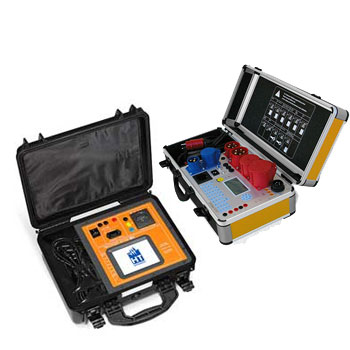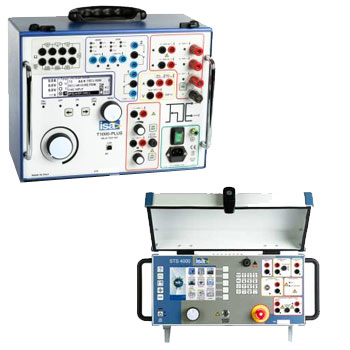
Level Sensors & Submersible Transmitters – continuous level and volume measurement for tanks & pits
Level sensors and submersible transmitters provide continuous level measurement in liquids—from clean/industrial water and wastewater to chemicals and oils, even food & beverage. Depending on the task, choose from hydrostatic submersibles, radar/FMCW, guided wave radar (TDR), ultrasonic, magnetostrictive rod sensors and capacitive solutions.
Features (model-dependent): measuring ranges from centimeters to >100 mH₂O, accuracy to ±0.1 % FS, hygienic design, ATEX/IECEx, SIL, integrated temperature, density/temperature compensation, volume linearization, and interfaces such as 4–20 mA/HART, Modbus/RS-485, Profibus/Profinet, EtherNet/IP and IO-Link.
ICS Schneider Messtechnik supports principle selection, sizing (geometry, dead/blank zones), materials, calibration and integration into PLC/SCADA/IIoT.
FAQ on Level Sensors & Submersible Transmitters
Answers on measuring principles, selection, installation, vented/absolute probes, accuracy, hygiene/ATEX, calibration and best practices.
Which measuring principle fits my application?
| Principle | Typical media | Strengths | Notes |
|---|---|---|---|
| Hydrostatic submersible | Water, wastewater, chemicals, oil | Simple, robust, very deep ranges | Compensate density/temperature |
| Radar/FMCW (free-space) | Liquids incl. foam/steam | Very precise, non-contact | Clear view; choose antenna wisely |
| Guided wave radar (TDR) | Liquids, interfaces | Insensitive to internals | Probe length = measuring range |
| Ultrasonic | Water, wastewater | Economical, non-contact | Watch steam/turbulence |
| Magnetostrictive (rod) | Oils, chemicals, hydraulics | High accuracy, multi-point/interface | Requires float(s) |
How does a hydrostatic submersible work?
It measures the liquid’s hydrostatic pressure above the sensing element. From pressure and density, the level height is calculated. A vent tube in the cable compensates atmospheric pressure (gage).
Vented (gage) or absolute—what should I choose?
| Variant | Advantages | Use when |
|---|---|---|
| Vented (gage) | Direct level signal, easy scaling | Standard for tanks/wet wells |
| Absolute | Hermetically sealed, no vent | Condensation/salt mist; add barometric correction |
What accuracy is realistic?
Submersibles typically ±0.1…0.25 % FS, radar/TDR ±2…10 mm, ultrasonic ±0.25…0.5 % FS. Practical accuracy depends on density/T compensation, mounting and damping/steadying.
Which cable and housing materials make sense?
| Material | Temp. (typ.) | Resistance | Typical use |
|---|---|---|---|
| PU/PUR cable | −20…+80 °C | Abrasion, water resistant | Water/wastewater, industry |
| PE/PVC cable | −10…+70 °C | Economical | HVAC, utilities |
| FEP/PTFE cable | −50…+100/200 °C | Top chemical/thermal | Chemical/CIP/SIP |
| 316L housing | to +80…+125 °C | Corrosion resistant | Food, water |
| Hastelloy®/Titanium | model-dependent | Highly corrosion-proof | Chemicals/seawater |
How do I mount submersible probes correctly?
- Use a calm zone or stilling well, away from inlets/agitators.
- Route the cable strain-free with a sinker weight or clamp; respect bend radius.
- Keep the vent filter dry and above highest level.
How do density and temperature changes affect readings?
Hydrostatic level scales with density. If density varies, use compensation (e.g., density curve vs. T) or choose radar/TDR which are largely density-independent.
Can the instrument output volume directly?
Yes. Many transmitters provide strapping tables/linearization (e.g., horizontal cylinders) and compute volume/mass with temperature compensation.
What matters in hygienic applications?
316L, hygienic process connections (clamp/Varivent/flush), FDA/EU 1935/2004 seals, polished surfaces, CIP/SIP resistance; EHEDG designs available.
Are ATEX/IECEx and SIL versions available?
Many models come with Ex approvals (Zones 0/1/2 and 20/21/22) and SIL2/3. In hazardous areas use suitable isolators/barriers and device categories.
How long should a TDR or magnetostrictive probe be?
Probe length = measuring range + safety margin (observe upper/lower blocking distances). For interfaces configure both phases or use dual floats.
How do I avoid errors from foam or buildup?
For foam/steam prefer radar/TDR; for buildup, use purge or flush diaphragm sensors. Ultrasonic needs a dry, unobstructed sound path.
Which outputs/communications are available?
4–20 mA/HART, 0/10 V, relay/PNP/NPN, Modbus/RS-485, Profibus/Profinet, EtherNet/IP, IO-Link. Diagnostics include echo profiles, signal quality and sensor status.
How are parameterization & calibration performed?
Via keys/display, DTM/EDD/software or IO-Link. Set zero/span, load strapping tables, configure damping/alarms. Hydrostatic: set zero at empty/defined level.
How often should I calibrate?
Typically annually depending on QA criticality. After medium/density changes, re-verify. Replace the submersible’s vent filter/desiccant periodically.
What ingress protection and cable seals are common?
IP68 for submersibles; for chambers/outdoors ensure IP67/IP69K at transitions. Use cable glands with strain relief and a drip loop.
How do I handle condensation and air/gas bubbles?
Keep the vent filter dry; add venting to stilling wells. Avoid air entrainment (feed lines below surface; avoid fall pipes beside the sensor).
Typical pitfalls & quick fixes
- Drift from density/temperature → enable compensation or change principle
- Unstable signal → stilling well/damping, increase inlet distance
- Moist vent tube → renew desiccant/filter, mount higher
- Wrong probe length → match to measuring span
- EMC coupling → shielded, separated wiring; bonding
Do you support selection, sizing & commissioning?
Yes. We choose the best principle, size the range/probe, define installation & linearization, provide calibration certificates and integrate the point into PLC/SCADA/IIoT.













































































































































































